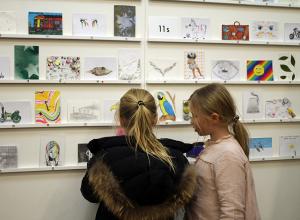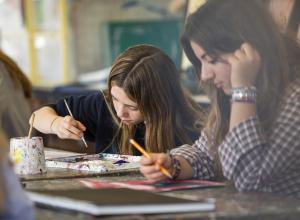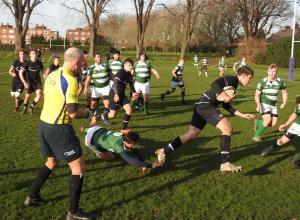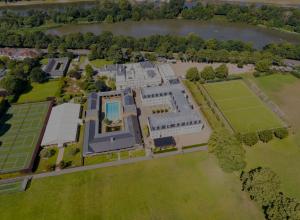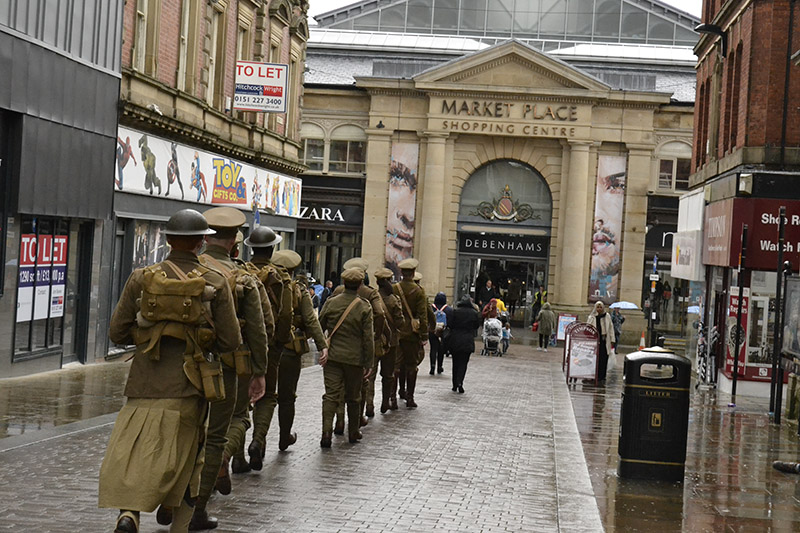



History of Art student, Ariana Eisler shares her essay on Jeremy Deller's moving modern memorial to those who fought in the Battle of the Somme.
‘We’re Here Because We’re Here’ is a nationwide memorial performance by Turner Prize-winning artist, Jeremy Deller, which took place on July 1, 2016, in collaboration with The National Theatre, in order to commemorate the 100th anniversary of the soldiers who lost and sacrificed their lives in ‘The Battle of The Somme’ during WW1. The battle in question was a human catastrophe on an unimaginable scale, resulting in just under 20,000 British deaths.
Deller’s enactment comprised of 1400 volunteers, many of whom were either descendants or relatives of participants in the battle or part of a reenactment committee. All participants in the performance were sworn to secrecy in order to ensure a highly emotive impact on the public at large. The project took two months of planning and intricate composition, detailing not only how the partakers would actually behave when interacting with the public but also towards each other; the performance was carried out in silence with the exception of an audio intervention in the form of a song: “We’re here Because We’re Here”, lyrics which they sang in unison. This is a song of weariness and resignation, which was once sung by soldiers in the trenches back in the day; it is this very song in fact which directly inspired the title of Deller’s work.
Deller’s artistic performance was extremely effective as although silent, the intervention of the soldier groups amidst general members of the public, was extremely powerful and moving. The performing soldiers also handed out cards engraved with the names of lost soldiers alongside associated dates of their respective deaths. “We’re Here Because We’re Here” was printed on the cards, enabling the event to carve a memorable and thought-provoking space in the mind of the viewers and passers-by. The soldiers’ formations took place mainly in routine public locations such as supermarkets, train stations, parks, and large open spaces, as the artist “wanted to avoid heritage places”; Deller preferred to keep this project separate from the human sentimentality which would have normally been associated with such historic locations.
This performance may be regarded by some as an untraditional form of art practice; however, I would argue that its powerful effect has managed to highlight the devastation of war through art. For my taste, I consider the piece as a true national event. When viewing the video of the performance in class, I found the superimposition of first hand voice testimonials by WW1 participants particularly poignant, as it demonstrates the sheer awfulness of the massacre and death which took place, based on shared intimate experiences. The reality of those words, coupled with the imagery of the soldiers in the midst of contemporary civilians, forces the viewer to take a moment off his or her daily routine and ponder upon the horrors of war. Deller’s work is particularly effective not only through words but also through a strong visual intervention, no doubt affecting the lives of passers-by. Without a doubt, we are forced to stop and think. It is because of these very soldiers who fought and gave their lives for their country and the principals and ideals by which they stood, that we, today, have been given the gift of freedom of thought, expression, and mobility. These soldiers fought for democracy, and we should never allow ourselves to forget their sacrifice, nor ever take it for granted. Hopefully, humanity and society will learn from past experiences and prevent the implementation and repetition of past mistakes.
Today, especially amidst the chaotic world that we find ourselves living in, it is of utmost importance that we stand united by the principals by which and for which our forefathers fought, courageously and unashamedly. That, in itself, is worth our collective fight - not only as individuals, but also and most importantly as contributive members of our society. Today, more than ever, it is our duty to take a stance, to voice our opinions, and to be activists, fighting for the causes we believe in, Deller’s work being a prime example. Silence is not an option.
Photos and video from https://becausewearehere.co.uk/we-are-here-gallery/
By Ariana Eisler, Upper Sixth History of Art student

